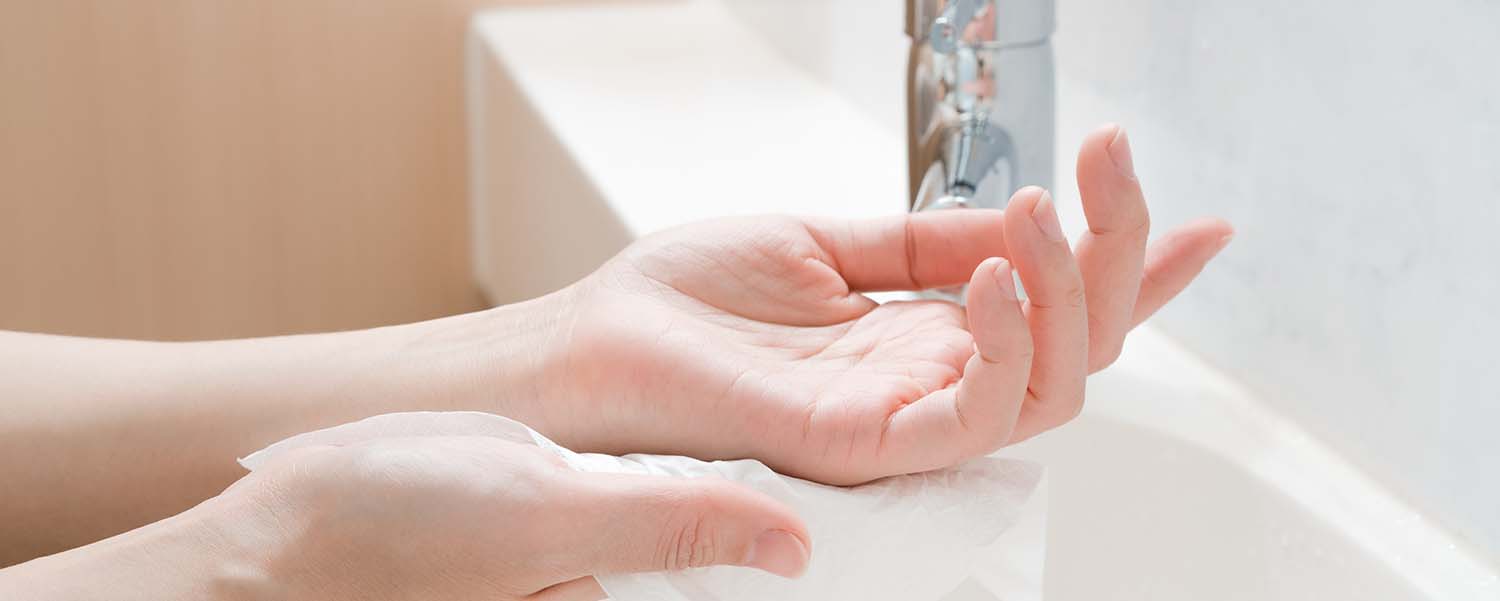Two Weapons to Conquer Cold & Flu this Season: Hand Hygiene and Facility Cleaning

Tis’ the season – for cold and flu season that is. Unfortunately, it’s that time of year when everyone seems to get sick. And it’s not in our heads – scientists recently found out the biological reason that we get more respiratory illnesses in winter. It’s because the cold air itself damages the immune response occurring in the nose[1]. According to the study, reducing the temperature inside the nose by as little as 9 degrees Fahrenheit kills almost 50% of the billions of virus- and bacteria-fighting cells in nostrils. While cold and flu season is inevitable, there are ways to combat germs from spreading in your facility to help keep your building patrons healthy. While easier said than done, hand hygiene combined with thorough facility cleaning is a deadly weapon for pathogens and can significantly reduce the spread of infectious disease.
Stop Germs in Their Tracks With the Four Principles of Hand Awareness
According to the U.S. Centers for Disease Control (CDC), handwashing is one of the best ways to protect yourself and your family from getting sick[2]. While handwashing is simple and one of the most effective ways to prevent the spread of germs, unfortunately not everyone does it. In fact, a recent survey found handwashing frequency decreased 25% among adults compared to when the coronavirus first hit[3].
When it comes to hand hygiene, education is key. Dr. William Sawyer, a hand hygiene and infection prevention expert, founded the Henry the Hand Foundation in 2001 when he realized the need to educate both children and adults regarding the important life skill of effective hand hygiene to promote health and wellness. Endorsed by the American Medical Association and the American Academy of Family Physicians, his science-based multi-media and multi-sensory hand hygiene behavior modification program teaches hand hygiene, respiratory etiquette and cross contamination awareness using four key principles which include:
- Wash your hands when they are dirty and before eating
- Do NOT cough into your hands
- Do NOT sneeze into your hands
- Do NOT put your fingers into your eyes, nose, or mouth.
These easy-to-follow principles can help everyone stay healthy this season and beyond. Facility managers can post signage throughout their building in strategic places such as restrooms and kitchen areas to remind building occupants of these four principles along with the correct way to wash hands. The CDC recommends scrubbing hands together with soap for at least 20 seconds using clean, running water and either air drying or using a clean towel to dry[4].
In addition, implementing a hand sanitizer program in your facility can also help boost hand hygiene compliance. Place hand sanitizer stands in high traffic areas, kitchens, break rooms, or anywhere soap and water are not readily available. Also, the type of hand sanitizer can make a huge difference in
compliance. Many sanitizers on the market can be drying, which may discourage patrons from using it. It’s important to select a quality sanitizer that is effective, yet gentle enough for everyday use. Look for a formula that kills 99.9% of bacteria and contains a moisturizing agent to help keep hands soft and protect against drying skin.
Destroy Viruses on the Spot with an Active Cleaning Program
Cold, flu and other viruses including RSV can stay infectious for several hours to days depending on the surface they land on. They are able to be live longer on stainless steel, plastic and hard surfaces than on fabric and soft surfaces[5]. The CDC notes that routine surface cleaning can help reduce the spread[6]. Implementing a consistent, effective cleaning program can significantly help keep germs at bay in your facility.
To disinfect surfaces, including common touchpoints, thoroughly and with ease, consider an electrostatic disinfectant spray service that utilizes a broad-spectrum disinfectant. Unlike a mister or fogger, an electrostatic charge allows droplets to attach to surfaces rather than floating in the air to help keep all touchpoints, including hard-to-reach places protected. Look for a sustainable, odor-controlling system that can kill 99.9%of bacteria but is free of harsh chemicals to protect everyone’s health.
Beyond common touchpoints and surfaces, restrooms are another key area to focus on for infection prevention. Studies have found that nearly everything in a public restroom including open toilet lids, uncovered garbage cans and electric hand dryers can spread infections to visitors[7]. It doesn’t have to be that way though. Deep cleaning restrooms on a routine basis with a high-pressure cleaning system to remove bacteria and soil build-up from all surfaces in the restroom helps keep germs away and can make daily maintenance easier. Keeping the restroom fully stocked with essential, quality supplies such as hand soap and paper towels will also help promote hand hygiene to help stop germs from leaving the restroom.
As we trudge through the dreaded cold and flu season, it’s important not to give up the fight against germs in your facility. Encouraging building patrons to adhere to the four principles of hand hygiene combined with an effective cleaning program is a gameplan for victory.
[1] https://www.cnn.com/2022/12/06/health/why-winter-colds-flu-wellness/index.html
[2] https://www.cdc.gov/hygiene/personal-hygiene/hands.html
[3]https://www.bradleycorp.com/handwashing.
[4] https://www.cdc.gov/handwashing/when-how-handwashing.html
[5] https://www.mayoclinic.org/diseases-conditions/flu/expert-answers/infectious-disease/faq-20057907
[6] https://www.cdc.gov/flu/resource-center/images/multi-language-pdfs/contamination_cleaning_english_508.pdf
[7] https://studyfinds.org/public-bathrooms-germs/

















